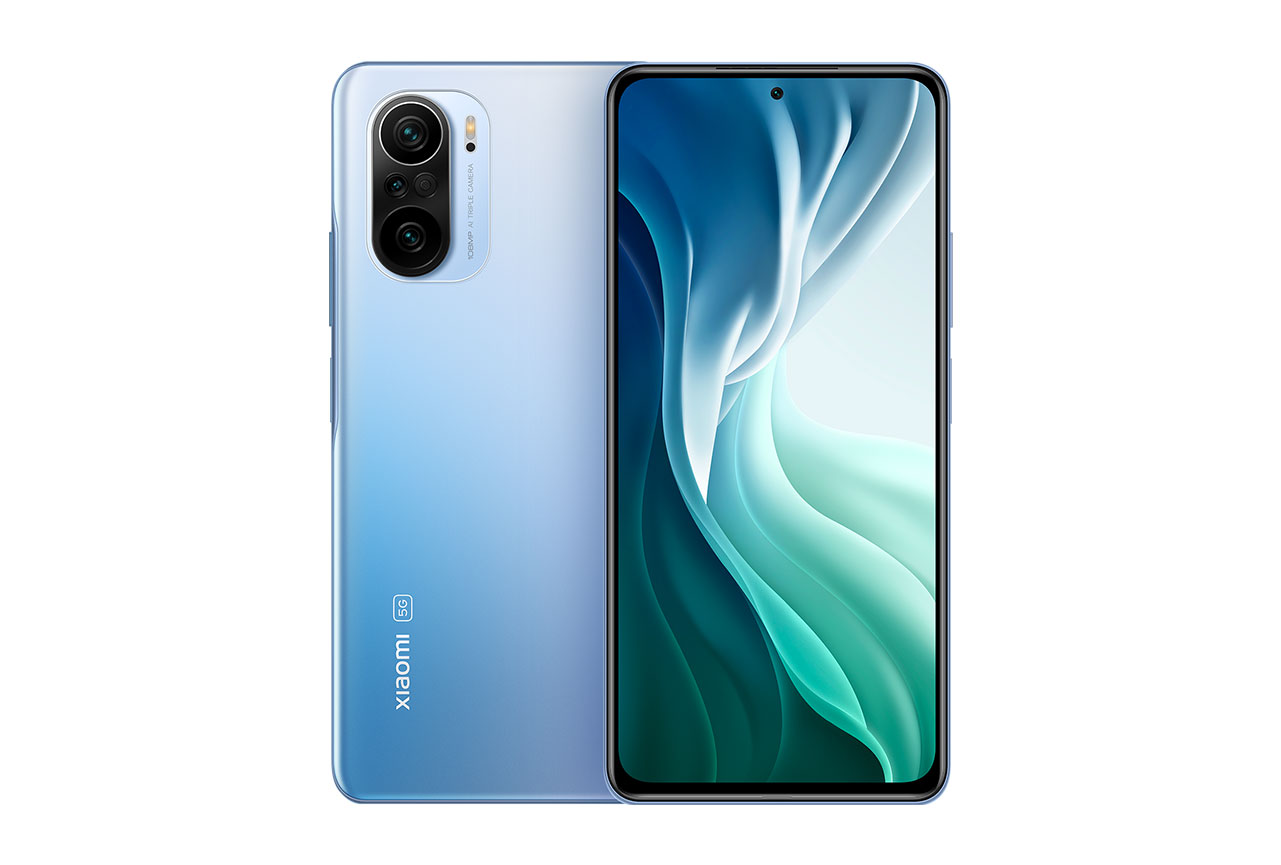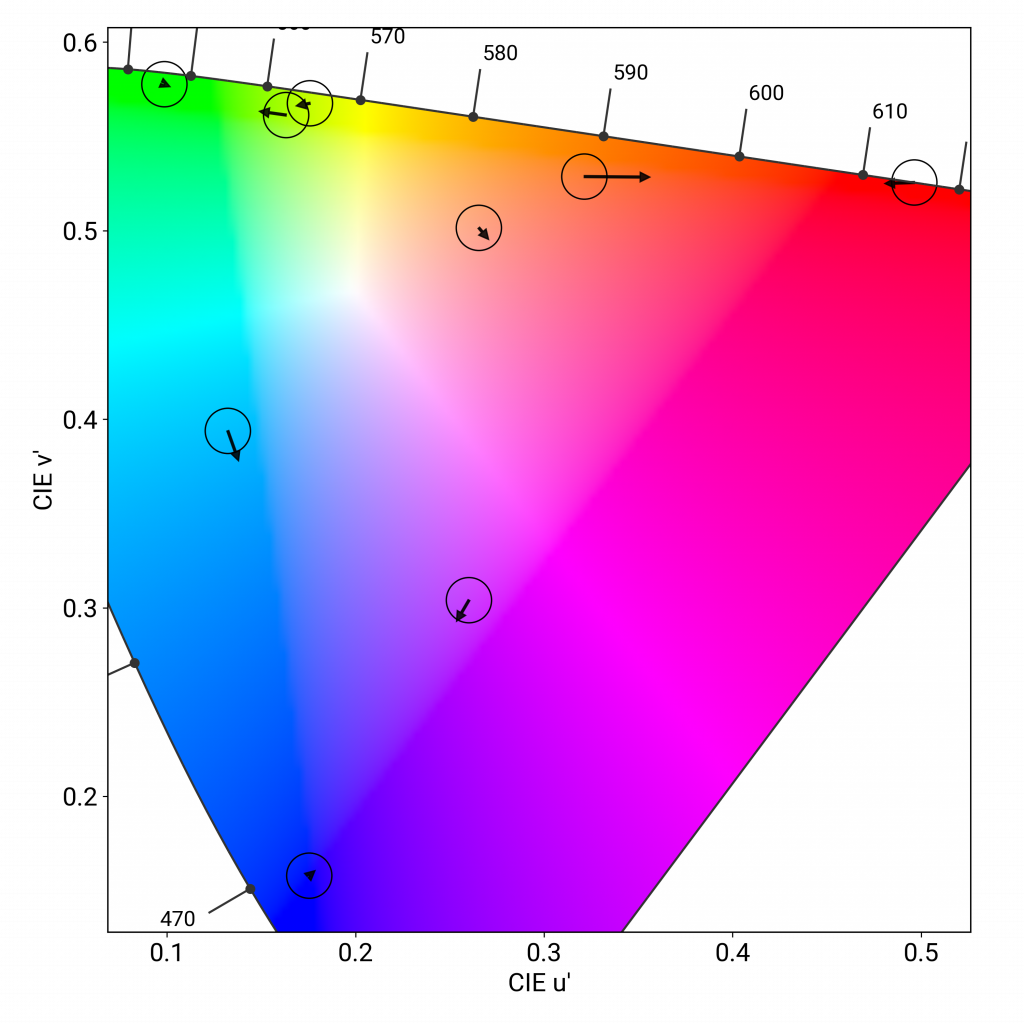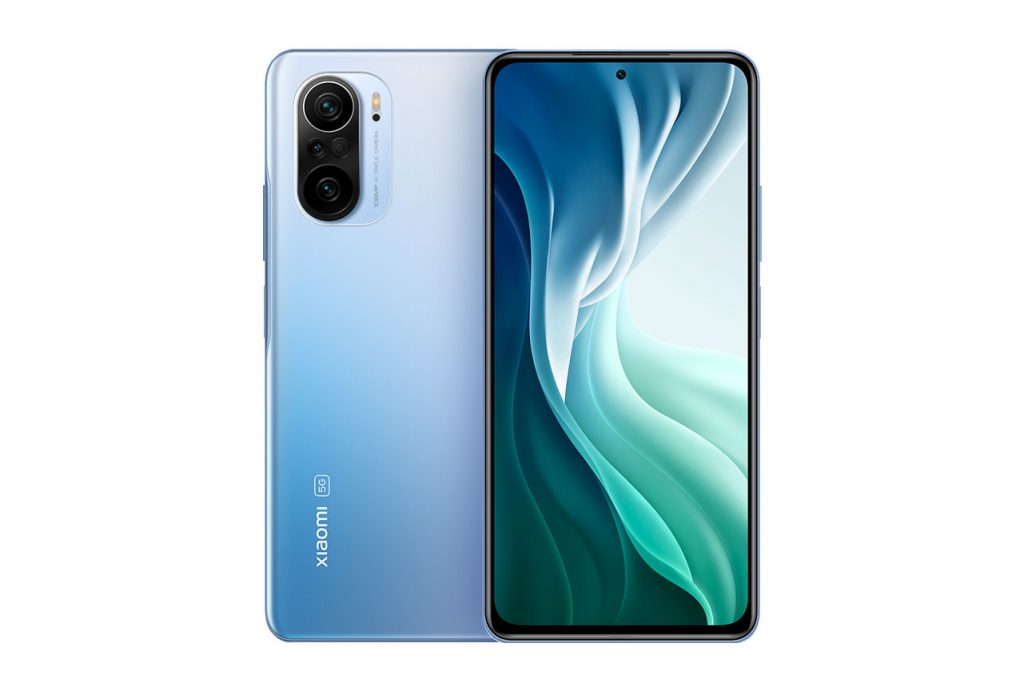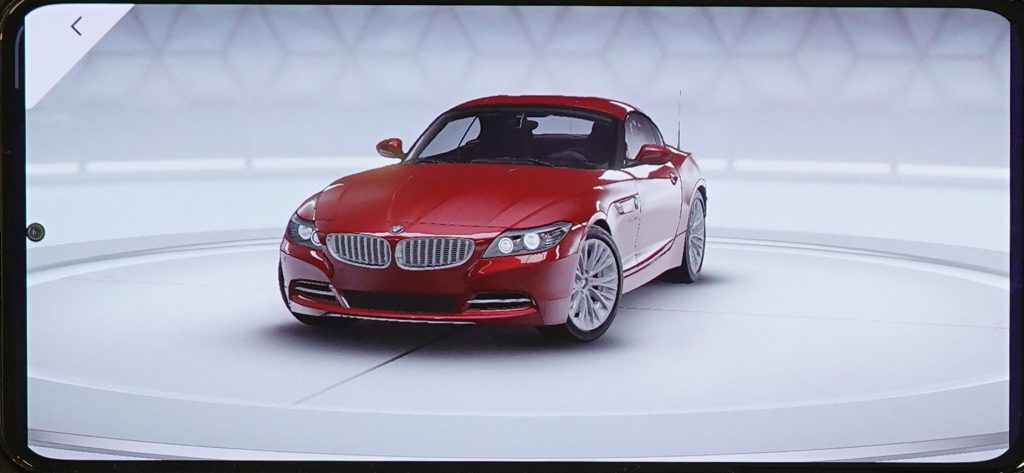The Xiaomi Mi 11i arrived on the market in May 2021 as a less expensive alternative to its brand stablemate, the Xiaomi Mi 11. Let’s see how it fared in our array of comprehensive display tests.
Key display specifications:
- 6.67-inch AMOLED display
- Resolution: 1080 x 2400 (395 ppi)
- Aspect ratio: 20:9
- Refresh rate: 120 Hz
- Qualcomm Snapdragon 888 5G (5 nm) chipset
About DXOMARK Display tests: For scoring and analysis in our smartphone and other display reviews, DXOMARK engineers perform a variety of objective and perceptual tests under controlled lab and real-life conditions. This article highlights the most important results of our testing. Note that we evaluate display attributes using only the device’s built-in display hardware and its still image (gallery) and video apps at their default settings. (For in-depth information about how we evaluate smartphone and other displays, check out our articles, “How DXOMARK tests display quality” and “A closer look at DXOMARK Display testing.”)
Test summary
 Xiaomi Mi 11i
Xiaomi Mi 11i

83
display
64
Apple iPhone 13 Pro Max
Best: Apple iPhone 13 Pro Max (76)
82
Sony Xperia 5 IV
Best: Sony Xperia 5 IV (92)
77
Samsung Galaxy S22 Ultra (Snapdragon)
Best: Samsung Galaxy S22 Ultra (Snapdragon) (91)
74
Huawei P40 Pro
Best: Huawei P40 Pro (87)
62
OnePlus 9
Best: OnePlus 9 (85)
79
Apple iPhone 13 Pro Max
Best: Apple iPhone 13 Pro Max (86)
Position in Global Ranking

60
th
1. Apple iPhone 13 Pro Max
99
6. Samsung Galaxy S22+ (Exynos)
93
6. Samsung Galaxy S22 Ultra (Snapdragon)
93
6. Samsung Galaxy S22 Ultra (Exynos)
93
11. Samsung Galaxy S22 (Snapdragon)
92
11. Samsung Galaxy S22 (Exynos)
92
13. Samsung Galaxy S21 Ultra 5G (Exynos)
91
16. Samsung Galaxy S21 FE 5G (Snapdragon)
90
16. Samsung Galaxy Note20 Ultra 5G (Snapdragon)
90
23. Samsung Galaxy Z Fold3 5G
89
23. Samsung Galaxy Z Flip3 5G
89
23. Samsung Galaxy Note20 Ultra 5G (Exynos)
89
31. Apple iPhone 12 Pro Max
88
31. Vivo X70 Pro (MediaTek)
88
31. Vivo X60 Pro 5G (Snapdragon)
88
39. Samsung Galaxy S20 Ultra 5G
87
48. Apple iPhone SE (2022)
86
48. Oppo Reno6 Pro 5G (Snapdragon)
86
58. Apple iPhone 11 Pro Max
84
71. Samsung Galaxy A52s 5G
79
71. Samsung Galaxy A52 5G
79
71. Xiaomi Redmi K50 Gaming
79
81. Samsung Galaxy A53 5G
77
85. Microsoft Surface Duo
74
95. Xiaomi Black Shark 3 Pro
61
97. Lenovo Legion Phone 2 Pro
53
Position in Premium Ranking

19
th
2. Samsung Galaxy S22 (Snapdragon)
92
2. Samsung Galaxy S22 (Exynos)
92
4. Samsung Galaxy S21 FE 5G (Snapdragon)
90
7. Vivo X70 Pro (MediaTek)
88
7. Vivo X60 Pro 5G (Snapdragon)
88
14. Oppo Reno6 Pro 5G (Snapdragon)
86
33. Lenovo Legion Phone 2 Pro
53
Pros
- Video brightness well suited for HDR10 content
- Well-managed aliasing and smooth when playing video games
- Well-controlled flicker
Cons
- Lacks brightness and readability under sunlight
- Displays blue and pink stripes when viewed on angle
- Visible gray haze on dark tones in HDR10 content
- Lacks smoothness when browsing the web using default settings
Xiaomi Mi 11i has good readability and color reproduction in average lighting conditions. It is a bit dark for reading by night but well suited for watching HDR videos.
Brightness vs Contrast comparison (0 Lux)
Brightness vs Contrast comparison (30 000 Lux)
The Xiaomi Mi 11i is readable indoors. It is somewhat hard to read outdoors in shade (note the loss of detail in darker areas)…
Readability outdoors in shade, from left to right: Xiaomi Mi 11i, Xiaomi Mi 11, OnePlus 8T, Apple iPhone 13 Pro Max
(Photo credit: DXOMARK; for illustration only)
… but it is harder to read under sunlight.
Readability under sunlight, left to right: Xiaomi Mi 11i, Xiaomi Mi 11, OnePlus 8T, Apple iPhone 13 Pro Max
(Photo credit: DXOMARK; for illustration only)
A slight pink cast is visible indoors and becomes more noticeable outdoors.
Color rendering outdoors in shade, clockwise from top left: Xiaomi Mi 11i, Xiaomi Mi 11, Apple iPhone 13 Pro Max, OnePlus 8T
(Photo credit: DXOMARK; for illustration only)
The left-hand chart below shows the Xiaomi Mi 11i’s color fidelity in the P3 color space. The center of each circle is the target color; the further the tip of the arrow is outside of the circle, the more users will notice the difference between the color on the display and the original color of the source material. The Mi 11i has generally accurate color reproduction. The scatter chart on the right indicates that the Mi 11i oscillates between pink and blue when holding it at different angles.
Xiaomi Mi 11i, color fidelity at 1000 lux in the P3 color space
Xiaomi Mi 11i, scatter graph of white point on angle
The top-left photos in the two arrays below illustrate the Mi 11i’s color shift as shown in the scatter chart. The pink cast mentioned above is visible in the Mi 11i’s on-axis photo below, and it is nearly purple in the on-angle photo. When changing the angle of the phone, the shift appears as pink and blue lines that move along the screen.
Indoor color rendering on axis (top) and on angle (bottom), clockwise from top left: Xiaomi Mi 11i, Xiaomi Mi 11, Apple iPhone 13 Pro Max, OnePlus 8T
(Photo credit: DXOMARK; for illustration only)
The Mi 11i’s video brightness is good in low light, and while contrast is a bit low on midtones, dark details are visible when watching HDR10 videos. But a reddish cast makes skin tones appear too red.
Video color rendering, clockwise from top left: Xiaomi Mi 11i, Xiaomi Mi 11, Apple iPhone 13 Pro Max, OnePlus 8T
(Photo credit: DXOMARK; for illustration only)
The device shows many frame mismatches at 30 fps and some frame mismatches at 60 fps, though no frame drops are visible when playing games; motion blur is well managed. After moving forwards or backwards in the timeline, playback is delayed and sometimes slower than it should be for a few seconds after resuming.
The Xiaomi Mi 11i is not accurate when zooming in the gallery app. It is smooth when playing video games but lacks smoothness when browsing the web and when scrolling in the gallery.
Judder is noticeable; nevertheless, although it also occasionally responds to ghost touches, the Mi 11i provides a comfortable, precise, and smooth gaming experience, and manages aliasing well.
The Xiaomi Mi 11i controls aliasing well. (Photo: DXOMARK, for illustration only)
Xiaomi Mi 11i, closeup of aliasing
 Xiaomi Mi 11i
Xiaomi Mi 11i


 60th
60th
 19th
19th













DXOMARK encourages its readers to share comments on the articles. To read or post comments, Disqus cookies are required. Change your Cookies Preferences and read more about our Comment Policy.